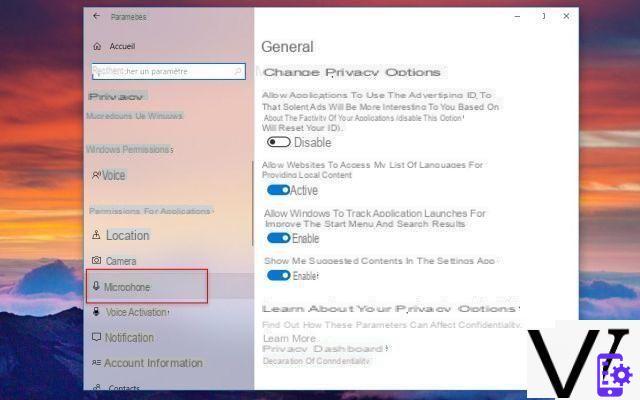With the new Leica SL2-S, the German company has really hit the mark. With this fotocamera full-frame it points decisively to the hybrid mirrorless market, lowering the price compared to the SL2, but offering top-notch features. Both in the photographic and video fields. The big differences with the older sister are the 24MP sensor, a higher operating speed and a more advanced video sector. In other respects, including the aesthetic one, on this mirrorless camera it changes little. Make yourself comfortable as we leave for the full review Leica SL2-S.
- Leica SL2-S: the review
- Mirrorless Leica SL2-S: body and ergonomics
- Connectivity and more
- Leica SL2-S: ease of use
- Top performance
- Mirrorless Leica SL2-S: conclusions and price
- More on photography
Leica SL2-S: review
It is now well established that Leica mirrorless cameras can do them. The historic German house is not just tradition, rangefinder and manual focus. Surely the iconicity of the Leica M will never be matched by the SL line, but since the first version we had seen the full potential of a system that is growing and that could now begin to undermine its competitors. In fact, despite the distance in price between the new Leica SL2-S - presented just over a month ago - and the most direct rivals is still wide, the gap is narrowing.

The first key feature of the new Leica SL2-S is certainly the sensor. Not so much because it has about half the megapixels of its sister, but because of the choice to enter an already very rich market segment.
This mirrorless, in fact, in many respects overlaps with already established models such as Sony A7III or fresher ones such as Canon R6, Lumix S5 and Nikon Z6 II. The 24MP resolution is practically the same for all these mirrorless cameras, as well as the hybrid soul that allows both photographers and videomakers to count on advanced features in both fields.
Mirrorless Leica SL2-S: body and ergonomics
But let's go into more detail and see what the Leica SL2-S looks like. As I have already anticipated, practically nothing changes compared to the older sister. What allows us to distinguish them on the fly is the word LEICA on the front, which on the SL2 is white while on this SL2-S it is black. The body is always made starting from a single block of aluminum, which is worked to give the desired shape. The end result is a massive but elegant body, which also counts IP54 certification. As on all Leica, the controls on the body are few to maintain a minimal and coherent line between all models.

On the front of the full frame mirrorless, for example, we find two buttons next to the wide bayonet that we can customize to our liking. Speaking of bayonet, the Leica SL2-S obviously also mounts the binding L-mount, compatible not only with German lenses but also with those of Panasonic and Sigma, all part of the L-Mount Alliance.
The upper profile is also very clean, where there is room for one large and practical display which shows all the main shooting information. In addition to the shutter button we find a ring for exposure management and two other customizable buttons. For convenience, I used them for ISO and white balance adjustment.
At the rear, most of the space is occupied by the 3,2 ”diagonal LCD screen and with very practical touch functions. What might be considered a flaw for some is that it is a fixed screen. Especially thinking of a hybrid use, in fact, it could have been convenient to have an adjustable one. But it is certain that if that had been the case, this SL2-S would not have maintained such a clean design, an aspect on which Leica relies heavily.

Next to the display we find the Play, Fn and Menu keys, while in the upper part there is the ON / OFF lever, another customizable key and the joystick. Among these buttons, theexcellent electronic viewfinder, with a resolution of 5.76 million points and a refresh rate that reaches 120fps. With these features it almost feels like looking through an optical viewfinder. Also very practical is the diopter adjustment ring, which unlike many other cameras is large and comfortable to use.
On the far right, then, remains the last ring, the one dedicated to adjusting the aperture, but not only. In fact, we can press on the ring and change the shooting modes. This is the only way to not have to do this by going through the menu, because there is no classic mode selector that we find on many other cameras.
Connectivity and more
Being a hybrid camera, the connectivity aspect is crucial. And luckily we find what is needed, as one true HDMI port and the two 3,5mm headphone and microphone jacks. There is also a door USB type C, through which to recharge the battery or remotely control the Leica SL2-S.

On the other side of the camera body, however, there is the double SD memory card slot, with support for UHS-II type. Having two slots, as I believe everyone knows by now, allows us to have different recording options. For example, you can create backups or split DNG and JPEG files.

I close this analysis on the aesthetics and the camera body of the Leica SL2-S by talking about the battery. The compartment is located on the back and as in the other Leica SL there is a convenient release system that does not include doors of any kind.

With the battery, which as I said can be recharged via USB, we can get to more than 500 shots on a single charge. At least this is what Leica declares, but with attention we can also reach a greater number without too much difficulty.
Leica SL2-S review: ease of use
I used Leica SL2-S alternating two optics, theApo Summicron SL 35mm f/2 ASPH and Vario Elmarit SL 24-90mm f/2,8-4 APSH. The size and weight of the camera body balance that of the two optics quite well. I found the 35mm in particular to be the perfect size and weight for this full frame mirrorless.

The grip offered by the solid grip is also very good (if desired, a battery pack with a vertical grip is also available) and the layout of the controls is also practical. Perhaps only the joystick could have been slightly more to the right, so that it could be reached more easily.
In the shooting phase I must also say that in certain situations I missed a swiveling screen. I understand both the aesthetic limit and that of weather resistance, but today we cannot ignore this option on hybrid mirrorless cameras of this kind.
Moving on to the more practical aspects, I can imagine that for those who have never picked up a Leica SL it might seem strange not to have any indication on many of the keys on the body. You could probably find yourself confused, to the point of thinking that it is a complicated camera to use. Instead it is quite the opposite. The nameless keys are all customizable and doing so is super easy.

By keeping one of these buttons pressed, you enter the dedicated menu from which to assign the desired function. In addition to the basic settings, we can create the interface that best suits our way of photographing. Or to make videos. In fact, we can assign to the same key a function for the photo mode and one for the video one.
The menu is also managed in the name of simplicity, starting from what the rear display shows us, which changes according to the mode you are using. The ability to create your own menu with your favorite functions that will always be displayed as the first page is very practical. Basically we can set everything to our liking.
Top performance
The first consideration to make when evaluating the images produced with the Leica SL2-S is that today the 24MP resolution sensor is the most advanced on the market. I'll explain. With a 24 million pixel full-frame sensor all companies, not just Leica, manage to achieve a very high quality standard. Both in terms of sharpness and noise resistance, not to mention dynamic range. Leica SL2-S is no exception and the resulting files are flawless.
Much of the quality offered by this full-frame mirrorless is also due to the optics that we can match. The combination of sensor and optics Leica delivers great amount of detail throughout the frame. Even in images taken wide open with the 35mm f / 2 the images are very etched and the color rendering is absolutely natural.
Autofocus
In general, I find that the speed improvements Leica talked about during the press presentation have actually been made. The system AF aboard the Leica SL2-S, he convinced me but at the same time left me perplexed by some choices.
As well as being part of the L-Mount Alliance for years, Panasonic and Leica share more than just a bayonet. And if the comparison between SL2 and Lumix S1R had been taken for granted, even in this case I think there are many similarities between the SL2-S and Lumix S5. We find one of the similarities in theautofocus, which seems to have the same strengths and the same critical issues. Although the Lumix one seemed a little more responsive to me.
The precision in hooking a subject of all modalities convinced me, but I can't say the same about the speed. As soon as the lighting conditions are not optimal there is some slight slowdown. Nothing serious, but there are better options on the market in this respect. What amazes me is how the modality is handled Face Detection: but I do not understand why it is not integrated in every AF mode but it only works when called up.
ISO performance
Speaking of image quality, what struck me during this review is the performance of the Leica SL2-S at high ISO. Even at the highest sensitivities the images are detailed and up to ISO 12.500 can be considered more than usable. With increasing sensitivity, color management is also very good.

With any editing software equipped with the noise reduction mode, we can too clean up images shot up to ISO 100.000, the upper limit of this Leica SL2-S. In some cases I don't think it's even needed, but what I suggest to do is to transform the photographs into black and white, obtaining a paste that is really similar to that of the film. And this is a significant plus.
The video sector
The luck of being among the first to be able to try the new full frame mirrorless camera from Leica is accompanied, unfortunately, also by the short time available to be able to thoroughly test the video sector as well. But that's partly good too, so I can get my hands on the Leica SL2-S when they arrive new firmware updates which are already planned.
To date with the Leica SL2-S we can already record without time limits, which is not a small aspect, but we have limitations in terms of formats. Recording is currently enabled on the SD card 4K is 30 fps, while on an external recorder we have 4K and C4K at 10bit 4: 2: 2 with L-LOG up to 60fps.
Mirrorless Leica SL2-S review: conclusions and price
As I have already said it is easy to make comparisons between Leica SL2-S and Lumix S5, and why not also with Lumix S1. If there are many things inside that can certainly give strength to this voice, it must also be admitted that there are great differences.
We can start from the price, much higher, but which is justified by some aspects. The production entirely made in Germany, with an obsessive attention to every detail, the design and in general the materials used increase the cost for the end user. But these characteristics are the strengths of a company that always aims for excellence. And Leica SL2-S is absolutely in line with excellence.

The quality of the files produced, even at maximum ISO sensitivity, is very high, the lower resolution of the sensor also allows good bursts and the color rendering simply unique. The pleasure of shooting with a red dot camera equally. But what makes Leica mirrorless cameras special is also the ability to live long thanks to a very powerful hardware that can support years and years of firmware updates to always keep up with the times.
Leica SL2-S: price
In conclusion of this review we can say that the Leica SL2-S is a mirrorless camera that is second to none, the only real obstacle remains the 4575 € necessary to purchase the camera body only. But it's still a Leica.
 Leica Q2 - 50,4 Megapixel Digital Camera 4.890,00 EUR Buy on Amazon
Leica Q2 - 50,4 Megapixel Digital Camera 4.890,00 EUR Buy on Amazon


























